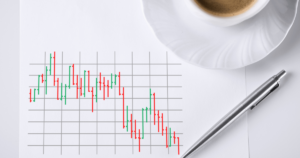Average Daily Range (ADR) trading strategies are an essential tool for traders looking to optimize their profits and improve their trading game. The ADR indicator calculates the average volatility of a financial asset and helps determine the potential for price movement. By incorporating ADR trading techniques, traders can make more accurate market price predictions and set profit targets accordingly.
Key Takeaways:
- ADR (Average Daily Range) trading strategies can help traders boost their profits and make more accurate market price predictions.
- The ADR indicator calculates the average volatility of a financial asset and helps determine the potential for price movement.
- Traders can use ADR to identify support and resistance levels and generate short-term trade signals.
- ADR should be used in conjunction with other analysis tools and not solely relied upon as a standalone trading system.
- Implementing ADR trading strategies requires understanding ADR levels, utilizing key indicators, and following practical tips for successful trading.
Now that we understand the importance of ADR trading strategies, let’s delve deeper and explore the concept of ADR and its significance in trading.
Understanding ADR and Its Significance in Trading
To effectively use ADR in trading, it is crucial to understand how it is calculated and the significance it holds in predicting market movements. The ADR indicator, short for Average Daily Range, is a powerful tool that measures the average volatility of a financial asset. By determining the potential for price movement, it assists traders in setting profit targets and making informed trading decisions.
“The ADR indicator allows traders to gauge the average price range within which an asset is likely to fluctuate in a single trading day,” explains John Thompson, a seasoned trader. “It helps identify support and resistance levels and generates short-term trade signals.” The ADR indicator can be applied to various financial instruments across different time periods, such as 20 days, to gauge their volatility and price potential.
When using the ADR indicator, traders can employ different trading techniques, such as breakout strategies and trading systems, to maximize their profits. Breakout strategies involve monitoring price movements and entering trades when the price breaks out of the established range. On the other hand, trading systems involve using the ADR indicator to generate trading signals, indicating the best times to enter or exit a trade.
Calculating ADR and Utilizing It in Trading Strategies
To calculate the ADR, traders should take the average of the high-low range over a specific period, such as 20 days. This gives them a reliable measure of the asset’s average daily price movement. By incorporating this information into their trading strategies, traders can determine the appropriate profit targets for their trades and make better-informed decisions.
| Date | High | Low | ADR |
|---|---|---|---|
| January 1 | 100.00 | 95.00 | 5.00 |
| January 2 | 98.00 | 92.00 | 6.00 |
| January 3 | 104.00 | 97.00 | 7.00 |
For example, if the ADR for a particular asset is calculated to be 5.00, a trader may set a profit target of 2.50 or 3.00 for a short-term trade, considering the potential price movement within a single trading day. This allows traders to better manage their risk and optimize their profit potential.
While the ADR indicator is a valuable tool for trading strategies, it should not be solely relied upon as a standalone system. It is crucial to combine the insights provided by the ADR indicator with other technical analysis tools and indicators. This comprehensive approach ensures traders have a well-rounded understanding of market conditions and increases their chances of making successful trades.
Implementing ADR Trading Strategies and Techniques
Once familiar with ADR and its significance, traders can implement various strategies and techniques to maximize their trading success. One effective approach is to use ADR levels as a tool for identifying potential support and resistance areas in the market. By analyzing past ADR levels, traders can gain insights into price behavior and make more informed trading decisions.
When utilizing ADR levels in trading, it is important to consider them in conjunction with other technical indicators to confirm potential trade setups. For example, combining ADR levels with trend lines or moving averages can help traders validate their analysis and increase the probability of successful trades. Additionally, using ADR levels in conjunction with candlestick patterns can provide further confirmation for potential market reversals or continuations.
Traders can also benefit from incorporating certain tips and techniques into their ADR trading strategies. One important tip is to pay attention to the ADR range in relation to current market conditions. During periods of high volatility, the ADR range tends to expand, indicating larger potential price movements. Conversely, during low volatility periods, the ADR range contracts, suggesting smaller price fluctuations. By adjusting their trading approach accordingly, traders can optimize their risk management and capitalize on market opportunities.
ADDITIONAL TECHNIQUE: Using ADR Trading Indicators
Another valuable technique is the use of ADR trading indicators, which can provide further insights into market dynamics. Popular indicators include ADR breakout indicators, which help identify potential breakouts above or below ADR levels, and ADR channel indicators, which highlight price ranges within the ADR boundaries. These indicators can assist traders in identifying potential entry and exit points, as well as managing stop-loss and take-profit levels.
| ADR Trading Tips | ADR Trading Indicators |
|---|---|
| Consider ADR levels in conjunction with other technical indicators | Use ADR breakout indicators to identify potential breakouts |
| Pay attention to ADR range in relation to market conditions | Utilize ADR channel indicators to identify price ranges |
| Adjust trading approach based on ADR volatility | Manage stop-loss and take-profit levels using ADR indicators |
In conclusion, implementing ADR trading strategies and techniques can significantly enhance traders’ profitability. By utilizing ADR levels, considering market conditions, and incorporating ADR trading indicators, traders can make more accurate predictions and optimize their trading success. However, it is important to remember that ADR should be used in conjunction with other analysis tools to ensure comprehensive market analysis and successful trading outcomes.
Conclusion
Incorporating ADR trading strategies can significantly enhance your trading performance and elevate your profits. The ADR indicator, which stands for Average Daily Range, is a useful tool for traders looking to make more accurate market price predictions. By calculating the average volatility of a financial asset, the ADR indicator helps determine the potential for price movement. This information can be utilized to set profit targets and identify suitable entry points for trades.
Traders can apply the ADR indicator to any financial instrument and calculate it over a specific period, such as 20 days. By doing so, they can identify support and resistance levels, which can serve as important reference points for their trading decisions. Additionally, the ADR indicator can generate short-term trade signals, enabling traders to capitalize on market opportunities.
However, it is crucial to remember that the ADR indicator should not be used in isolation. To achieve a well-rounded approach, it is important to combine it with other analysis tools. These tools can provide additional insights and confirm the signals generated by the ADR indicator. By utilizing a comprehensive range of analysis tools, traders can make informed trading decisions and mitigate the risks associated with relying solely on one indicator.
In conclusion, by incorporating ADR trading strategies into your trading routine, you can improve your chances of success in the market. The ADR indicator offers valuable information about price volatility and can assist in setting profit targets and identifying potential entry points. However, remember to combine it with other analysis tools to ensure a holistic and well-informed approach to your trading.
FAQ
What is the ADR indicator and how does it help in trading?
The ADR indicator, which stands for the Average Daily Range, calculates the average volatility of a financial asset and helps determine the potential for price movement. It can be used to set profit targets and determine whether it is a good time to enter a trade.
Can the ADR indicator be applied to any financial instrument?
Yes, the ADR indicator can be applied to any financial instrument, such as stocks, currencies, or commodities.
How is the ADR indicator calculated?
The ADR indicator is typically calculated over a period of time, such as 20 days. It calculates the average range between the high and low prices of the asset for each day in the specified period.
How can the ADR indicator be used to generate trade signals?
Traders can use the ADR indicator to identify support and resistance levels. When the price of the asset breaks out of the ADR range, it can signal a potential trading opportunity.
Is the ADR indicator a standalone trading system?
No, the ADR indicator should be used in conjunction with other analysis tools and strategies. It is not a standalone trading system.








